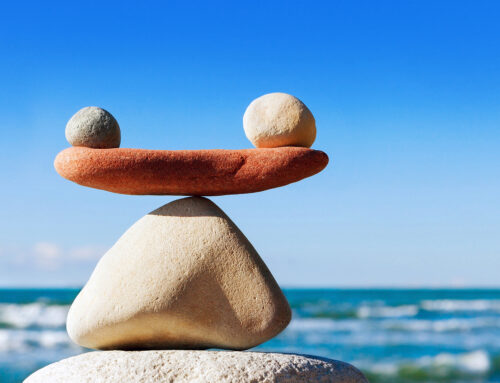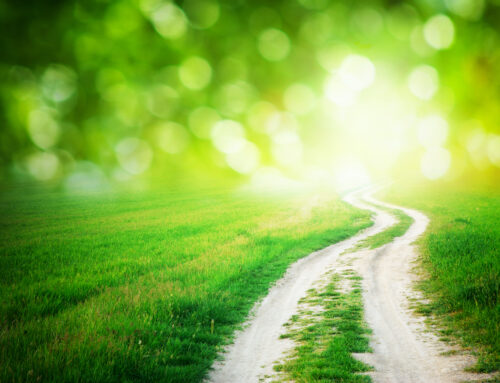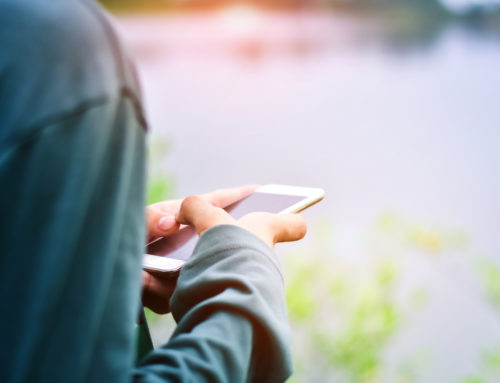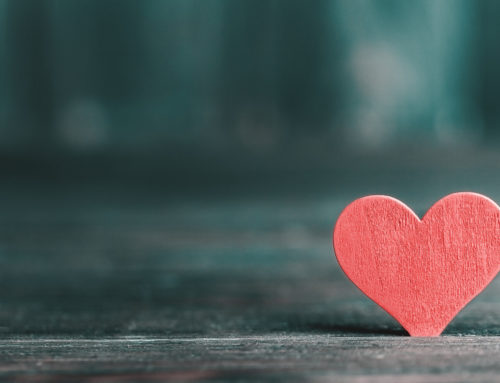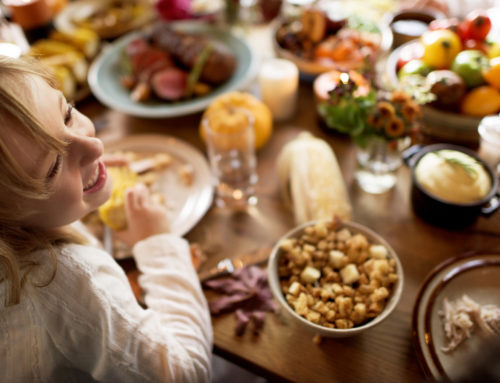
Early in the pandemic things felt quite dark. The news fed us horrifying images and statistics about the “unprecedented times” in which we were all living. In fact, the term “unprecedented” became so common, people began to roll their eyes when it was said, despite the fact that it continued to actually be true. It seemed like every day we encountered new levels of “this can’t be happening!” Everything felt so big and dark and scary. It was a really hard time for so many of us.
At the same time, though, things also got much quieter. As people stayed indoors, there were less cars on the road and less planes in the sky. Smog started to clear in some cities. This gave us all more time to be with ourselves and reflect on things. And there was a lot to take in.
As a therapist, I was acutely aware of the hard stuff impacting my clients’ lives (not to mention my own). Every day I was witnessing profound injustice, suffering and pain. I was doing everything I could to keep myself together so that I could show up for my clients with an open heart and presence, and witness their experiences and help them heal week after week. While there were many moments of fear, anger, pain and sadness in our sessions, these were by no means the only big themes we discussed. As the pandemic progressed, many of my clients also experienced unexpected and, yes, unprecedented moments of growth, self-realization, and healing. Everything was changing, and that was scary, but we learned it could also be exciting and provide fertile ground for profound growth.
Building The Race Car While Barreling Down The Track
While people were having their own relationships with the pandemic the health care community as a whole was (and is) having a crisis of its own. We had to create the guidebook for helping clients through a pandemic while the situation was unfolding real-time. It felt like we were building the race car while it was already barreling down the track. There were no truly relevant pre-existing treatment guidelines we could fall back on, so we had to make it up as we went along, making educated guesses based on what we thought we already knew.
Not long into the pandemic, my state’s department of health put together a graph charting the expected emotional impacts of the pandemic. (The graph appears on page 6 of this report.) Interestingly, they said we could expect an initial “honeymoon phase” of heroism and cohesion. This mapped well to some of the things I was seeing around me, for example:
– Some neighborhoods developed nightly routines of bringing people together in their front yards, porches and balconies to play music or sing together, or to put on silly performances to make each other laugh.
-Some celebrities went out of their way to connect with people and offer what they could to help. Mo Willems, the author and illustrator behind such child favorites such as Don’t Let The Pigeon Drive The Bus, was one of the first to offer this. Soon after schools closed, he started “Lunchdoodles,” a free daily online art class for any child who could attend via video. This provided a needed sense of community and support for some kids going through a very scary time.
-Some movies were released direct to TV instead of theater, even though doing so meant a major loss in potential income for the studios. But as a parent of two little ones at the time, I can say having Frozen 2 suddenly dropped into our living rooms long before we thought our kids would get a chance to see it felt like such a gift.
We’re All In It Together
We might not have all been in the same boat, but we were all on the water trying to navigate through the same storm. These moments of unexpected connection and levity helped give us necessary strength to keep going and provided inspired us to find innovative ways to reach out and help each other. For a time, we all remembered our common humanity – the basic fact that we are all part of the human race and all deserve compassion and respect. There was an invitation to join in a sense of unity and “we’re all in it together.” This brought a sorely needed dose of lightness to hold up against the dark.
I am old enough to remember 9/11. I grew up in New England and knew people directly impacted by the events of that day. Similar to the COVID-19 pandemic, in the days and weeks following 9/11 I remember a collective pause and period of quiet. For a while, there were literally no planes in the sky. And in these moments of quiet there were moments of unexpected unity.
For months, I remember people placed glowing candles in their windows every night. This was the case even with houses that didn’t usually put up holiday decorations. And when asked “How are you?” it seemed like people really slowed down to actively listen to each other. People began to encourage each other to quit the jobs they hated and “carpe diem” to find more meaningful ways to spend their time. Something beautiful was happening in tandem with some terribly awful things. Many spoke of a personal renaissance, of sorts, a renewal and clarity of priorities.
An Increase In Hope
After 9/11, a study was conducted by Christopher Peterson and Martin Seligman (2003) to investigate how peoples’ character strengths were impacted by 9/11. These character strengths are a list of traits associated with greater wellbeing. People can identify their character strengths by taking a free online assessment (available here if you want to take it yourself). In the wake of 9/11, researchers noticed a significant shift. Seven out of 24 character traits showed increases – gratitude, hope, kindness, leadership, love, spirituality, and teamwork. These results were still apparent 10 months later.
Similarly, another study investigated the impact the COVID lockdown had on peoples’ experiences of hope (Amirav, Besor, & Amirav, 2021). One might expect feelings of hope to decrease during this time. Surprisingly, they found that hope levels actually increased during the lockdown. One of their hypotheses for why this was the case is that perhaps hope never vanishes but rather exists constantly, but unnoticed in our normal everyday life. And that it is only when we face a stressful and fearful situation like the COVID-19 pandemic that we start searching for hope. Perhaps it is the times when we are forced to look for hope that we most often encounter it.
Crisis, Yet Also Opportunity
To be clear, the COVID lockdown was not a light and happy time overall. These examples of positive impact are not meant to disregard the negatives that were also happening at the time. However, this article is about making space for the potentially uncomfortable fact that while the darker stuff was occurring, some lighter stuff was happening too. And that it’s OK to acknowledge this. You can’t have light without the dark and vice-versa. Crisis is no exception.
Albert Einstein once said “In the midst of every crisis lies great opportunity.” In fact, the saying has its roots in the Chinese language where the calligraphy character for “crisis” is made up of two other characters: one stands for danger and the other stands for opportunity, or change. As an example, we see this universal truth play out in the cycle of forest fires paving the way for forest renewal. The charcoal left behind makes the ground especially fertile for new growth and revival. Yes, in every crisis, you can find both danger and opportunity. The COVID-19 pandemic has been no exception.
Some of my clients who had been plagued by social anxiety, for example, suddenly noticed significant drops in anxiety as they were no longer expected or able to see their co-workers on a daily basis. With lower baseline anxiety, some of these clients noticed greater productivity at work and an increased ability to rest on their down time. Without the assumed routine of commuting to work and attending in-person meetings all day, some clients suddenly found themselves with the free time they had been longing for. Some clients were finally able to start a sustainable exercise routine where they previously couldn’t find the time. Others found long-forgotten passions and hobbies that they were able to re-engage with.
Frequently clients would discuss their surprise at how much more easily they could focus on things while they were working from home. While this certainly wasn’t true for everyone, many people noticed less distractions when they could control their workspace at home. For those who were able to do that, they no longer needed to juggle the social dynamics around colleagues stopping by their desk to chat, for example. They had more control over their workday, and they could set up their workspace to support that.
Embracing the Whole Picture
Many people also noted they had less decisions to make on a given day. In the absence of interoffice dynamics, clients noticed a lot less decision fatigue. As it turns out, being social requires a ton of microdecisions in each moment – most of which we aren’t even fully conscious of. As my clients started to disclose these moments of lightness and growth, many of them also noted feelings of shame or confusion about what to do with these positive experiences. For many people, it felt wrong, disrespectful, or even shameful to talk about anything good when so much suffering was happening all around them. I encouraged them to allow themselves to embrace the good with the bad, because that is the way life happens – we often experience both “good” and “bad” things at the same time. It’s easy to focus more on one than the other, but we can often miss important opportunities for insight and growth when we do so.
When we are able to look at the whole picture – both the positive and negative aspects of it – we open ourselves up to new learning and perspectives. If we let go of what we expect to see, then we open ourselves up to seeing new information we may have otherwise overlooked. This allows us to pivot and make the most of what the moment is offering us. As my clients adjusted their routines and got better at adapting to the unexpected, many reported shifts in perspective that benefited them. The conversations shifted from “how am I going to get through this?” to “how am I going to be able to maintain what I have gained?”
Currently, COVID restrictions are being lifted and masking mandates have faded. Many people are trying to figure out what a “new normal” looks like. Employees are being asked to start commuting back to the office, gatherings are happening in-person again, and with this comes more change. Many people are wondering how to hang onto the positive changes they gained during the pandemic. My next blog will go into more detail about how to integrate any positive changes you have made as you continue moving forward into this next chapter.
In the meantime, I’d love to hear from you about anything you learned or gained during the pandemic. If you have any memories of the “cohesion & unity” moments, please share them here so we can all continue to benefit from them as we move forward.
References:
Amirav, D.; Besor, O. & Amiriv, I. (2021). Hope During COVID-19 Lockdown. Cureus. 2021 May; 13(5): e15097. Published online 2021 May 18. doi: 10.7759/cureus.15097
Peterson, C. & Seligman, M. (2003). Psychological Science,14 (4), pp. 381-4.

